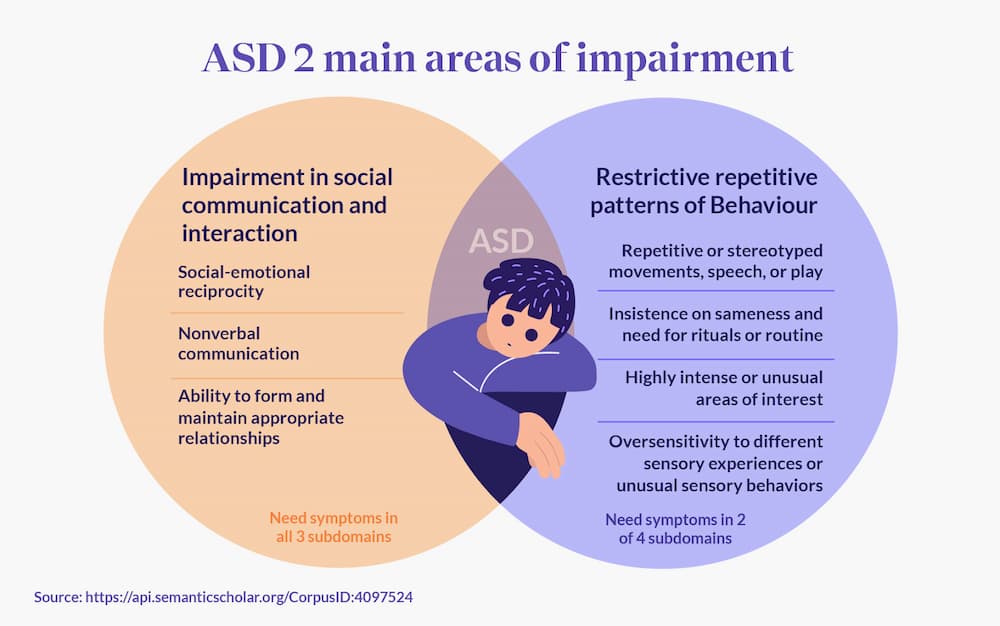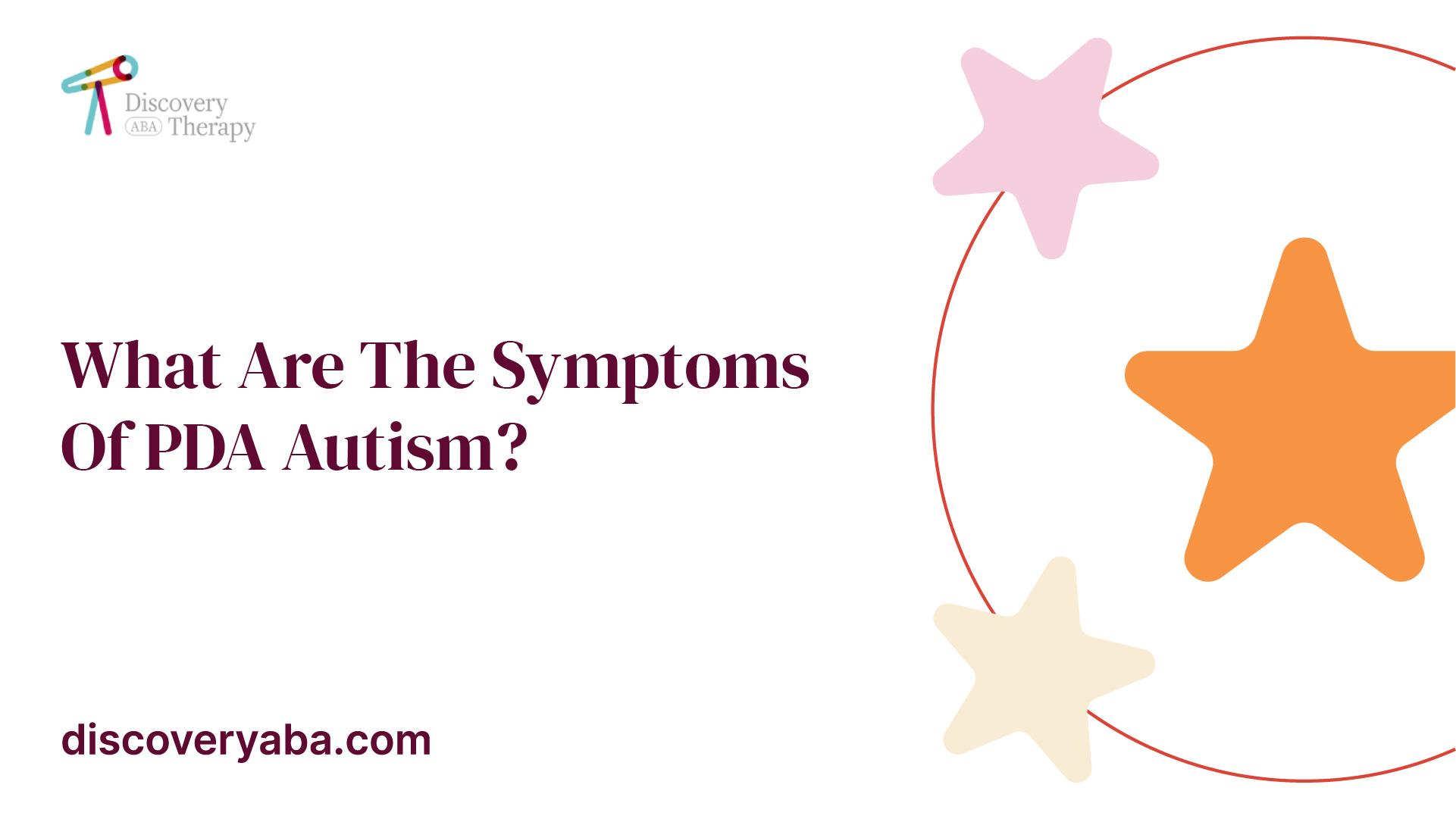Why social interactions can develop with Autism Spectrum Therapies
Why social interactions can develop with Autism Spectrum Therapies
Blog Article
Understanding the Impact of Behavioral Autism on Life and Social Communications
You might not realize exactly how deeply behavioral autism influences every day life and social communications. Individuals on the range frequently browse a globe full of communication hurdles and sensory overload. These obstacles can cause disappointment and isolation, influencing their connections and overall wellness. Recognizing these subtleties is necessary for promoting helpful environments. What approaches can we carry out to develop even more significant connections and comprehensive areas? The responses might stun you.
Specifying Behavior Autism and Its Qualities
Behavior autism, often described as autism spectrum problem (ASD), includes an array of conditions characterized by challenges in social communication, interaction, and repeated habits. You could notice that people with ASD commonly struggle to analyze social cues, which can lead to misunderstandings in discussions. They might locate it difficult to develop eye get in touch with or involve in small talk, making social situations really feel frustrating.
Communication troubles can show up in different ways, from postponed speech advancement to a preference for making use of less words. By acknowledging these qualities, you can promote a setting that promotes acceptance and motivates effective communication, assisting people with autism flourish in their everyday communications.
The Range of Autism: Recognizing Variability in Habits
Autism spectrum disorder (ASD) isn't a one-size-fits-all diagnosis; it varies widely among individuals. You may run into people that are very spoken and involve conveniently in conversations, while others may prefer solitary tasks or communicate non-verbally.
Additionally, the means people with ASD react to sensory input can vary substantially; some may be overwhelmed by loud noises or intense lights, whereas others grow in boosting settings. The range additionally includes distinctions in social interactions; some people may have a hard time to interpret social hints, while others navigate social setups with relative simplicity. Understanding this irregularity is crucial, as it aids you appreciate each person's distinct experience and tailor support to their particular needs, cultivating an extra inclusive atmosphere for everybody.
Interaction Challenges Faced by People With Autism
When you interact with people on the autism range, you might observe their special interaction difficulties. They frequently encounter difficulties with both nonverbal and spoken cues, which can impact their social communications. Comprehending these barriers is crucial for cultivating far better links and assistance.

Verbal Interaction Problems
Lots of individuals on the autism range experience spoken interaction difficulties that can significantly influence their everyday communications. Your tone, quantity, or pace might not align with social assumptions, causing others to misunderstand your intentions. Recognizing these difficulties can aid you and your assistance network establish techniques to enhance communication and foster far better connections with others in your everyday life.
Nonverbal Communication Barriers
Verbal interaction isn't the only challenge people on the autism spectrum face; nonverbal communication obstacles can be just as significant. You might find it hard to analyze body language, faces, and eye get in touch with, which are essential for effective interaction. These difficulties can lead to misunderstandings or misconceptions of social cues, making interactions really feel frustrating or complicated. You may battle to reveal your very own emotions through nonverbal means, leaving others not sure of your intentions or feelings. This detach can produce sensations of isolation and disappointment. Recognizing these barriers is important for fostering understanding and compassion in your interactions. By dealing with nonverbal interaction, you can find techniques to improve your social experiences and boost your overall lifestyle.
Social Interaction Impacts
Social interactions can often really feel frustrating because of the special communication difficulties faced by people with autism. You may have problem with translating social signs, making it difficult to recognize mockery or body movement. This can cause misconceptions or awkward minutes in discussions. Additionally, initiating and maintaining discussions might feel tough, triggering anxiety in social scenarios. You may prefer structured environments, making spontaneous interactions awkward. It's likewise usual to experience problem in engaging in tiny talk, which can prevent forming new relationships. Recognizing these challenges can help you discover methods to enhance communication, such as practicing social abilities in secure setups or utilizing aesthetic aids - Aba Therapist Near Me. Comprehending your requirements permits you to navigate social interactions with better confidence and convenience.
Social Interaction and Partnership Structure in Autism
While building partnerships can be challenging for individuals with autism, understanding their one-of-a-kind point of views and communication designs can foster meaningful connections. You could see that several individuals on the range prefer straight interaction and may have problem with social signs or small talk. By being straightforward in your communications, you can assist produce a setting where they really feel comfortable.
Engaging in shared rate of interests can likewise offer as a bridge to deeper connections. Whether it's a leisure activity, a favored show, or a mutual passion, these common strings can open up doors to friendship.
Day-to-day Live Regimen: Browsing Approaches and challenges
Steering everyday life regimens can be especially challenging for Aba Therapist Near Me individuals with autism, especially when unanticipated adjustments read more take place. To navigate these challenges, consider applying visual timetables or lists.
Establishing a regimen that consists of sensory breaks can additionally be advantageous. You can prepare time-outs throughout your day to charge. It's necessary to communicate with those around you, letting them know your requirements and choices. This aids develop an understanding setting.
Lastly, practice mindfulness strategies to take care of anxiety and stress and anxiety. Easy breathing exercises or basing strategies can make a significant difference. By including these methods, you can boost your day-to-day routine and lessen interruptions, making life really feel a lot more manageable.
Toughness and Abilities of Individuals on the Autism Range
Understanding every day life regimens is just one facet of the autism experience. Many people on the autism range possess exceptional toughness and capabilities that set them apart. You might locate that your focus to information is extraordinary, permitting you to excel in jobs that require accuracy and focus. Your capacity to think outside the box can lead to innovative options in different situations.
Moreover, your memory skills frequently radiate, specifically in areas of passion. Autism Behavioral Therapy. This knack for retaining details can make you a beneficial source in fields like scientific research, art, or technology. You may also display solid visual reasoning, allowing you to visualize intricate principles and address problems creatively
Additionally, your unique perspective on the world can foster empathy and understanding in others, enhancing social communications. Accepting these strengths not only improves your self-confidence but likewise assists others appreciate the varied skills you bring to the table.
Developing Comprehensive Settings for People With Autism
Creating inclusive atmospheres for individuals with autism begins with creating sensory-friendly rooms that provide to their one-of-a-kind requirements. You can likewise promote possibilities for social communication, assisting to develop friendships and links. By making these adjustments, you'll add to a more welcoming environment for everybody.
Creating Sensory-Friendly Spaces
While creating sensory-friendly spaces, it's crucial to mirror on the special needs of individuals with autism. click here Incorporate peaceful areas where people can reenergize and pull back when bewildered. Include aesthetic schedules or clear signage to help individuals browse the room with confidence.
Advertising Social Communication Opportunities
Creating sensory-friendly areas not only addresses individual convenience but likewise establishes the phase for purposeful social communications amongst individuals with autism. To advertise these communications, produce inclusive settings that invite participation. Arrange organized tasks, like art classes or team games, that urge cooperation without frustrating sensory input. Usage visual help and clear interaction to assist every person engage easily. Encourage peer mentoring, matching individuals with autism with encouraging peers that can assist them via social situations. In addition, consider holding normal area events that commemorate neurodiversity, cultivating acceptance and understanding among all participants. By implementing these strategies, you can improve social opportunities, helping individuals with autism build relationships and enhance their social abilities in a secure, inviting atmosphere.

Frequently Asked Inquiries
Exactly How Can Buddies Support Someone With Behavioral Autism?
You can sustain a buddy with behavior autism by being person, listening actively, and appreciating their borders. Engage in tasks they enjoy, interact freely, and create a comfortable setting where they really feel valued and understood.
What Resources Are Available for Parents of Kid With Autism?
You can check out various sources for moms and dads of youngsters with autism, consisting of assistance teams, instructional internet sites, and regional social work. Attaching with various other parents can additionally offer beneficial understandings and shared experiences to aid navigate obstacles.
Can Behavioral Autism Change Over Time?

Yes, behavior autism can transform gradually. You might discover changes in interaction, social abilities, and actions as your child expands. Early treatment and assistance usually play vital duties in these developmental modifications.
Exactly How Do Sensory Sensitivities Impact Daily Life?
Sensory sensitivities can make day-to-day experiences frustrating. You might deal with intense lights or loud noises, leading to tension or avoidance. Discovering environments that fit your needs can substantially improve your convenience and total day-to-day live.
What Are Usual Misconceptions About Behavioral Autism?
You could assume behavioral autism only impacts communication abilities, however it's even more complicated. Several think people do not have compassion or knowledge, which isn't true. Understanding these false impressions aids foster acceptance and support for those on the spectrum.
Behavior autism, usually referred to as autism range problem (ASD), incorporates a range of problems characterized by challenges in social interaction, interaction, and repeated habits.Social interactions can commonly really feel frustrating due to the distinct interaction difficulties encountered by people with autism.Creating sensory-friendly rooms not only addresses individual comfort however also sets the stage for meaningful social communications among people with autism. Encourage peer mentoring, pairing individuals with autism with helpful peers that can guide them via social scenarios. By executing these methods, you can improve social opportunities, assisting individuals with autism build relationships and strengthen their social abilities in a safe, welcoming environment.
Report this page